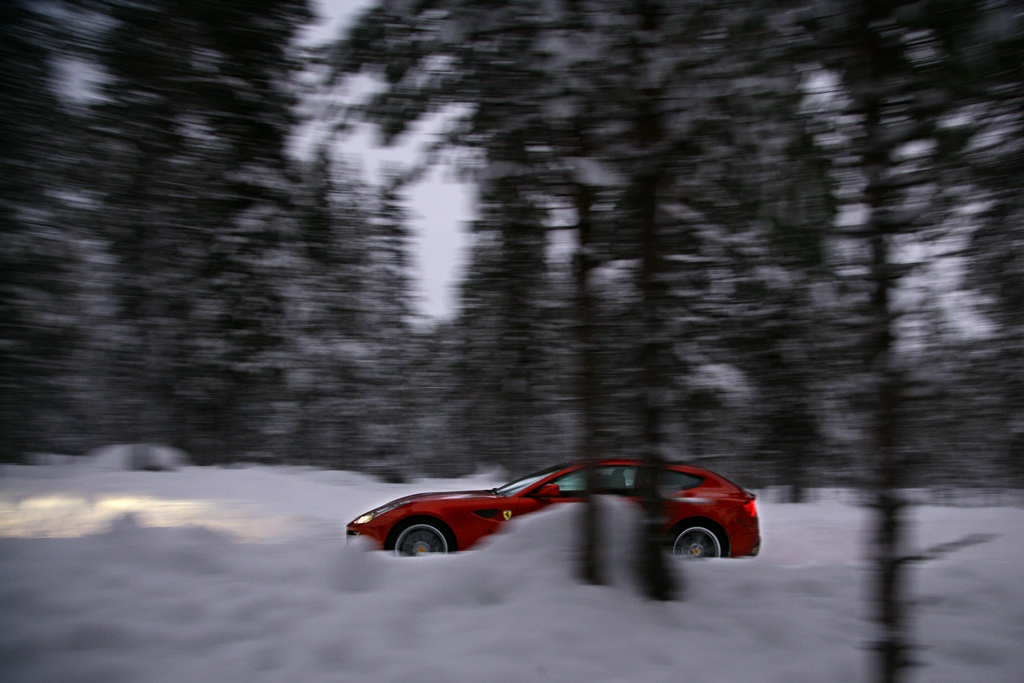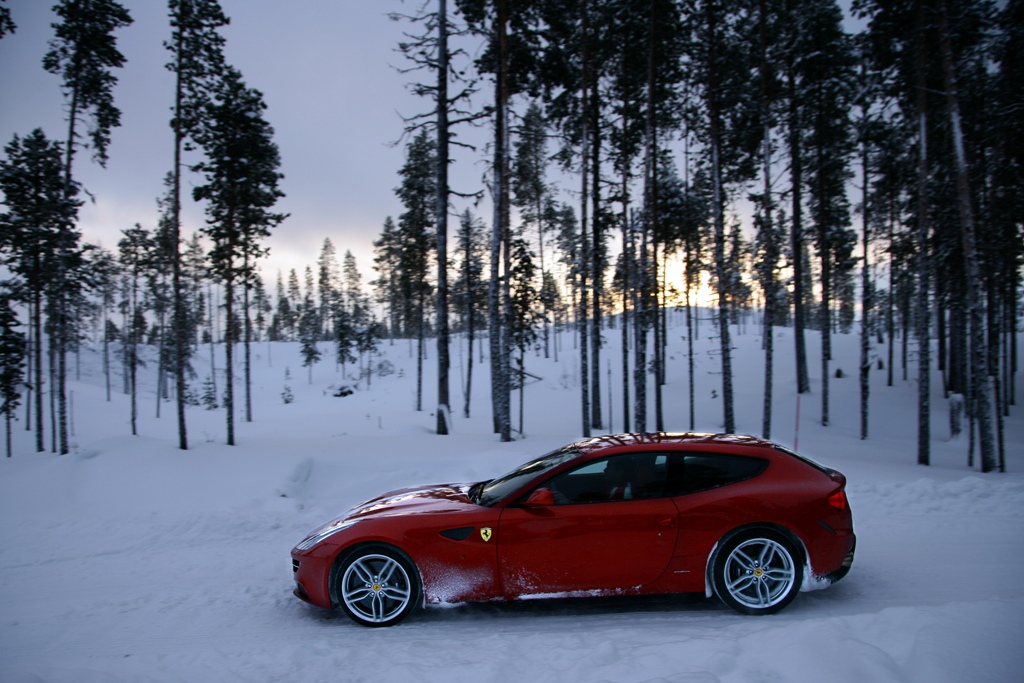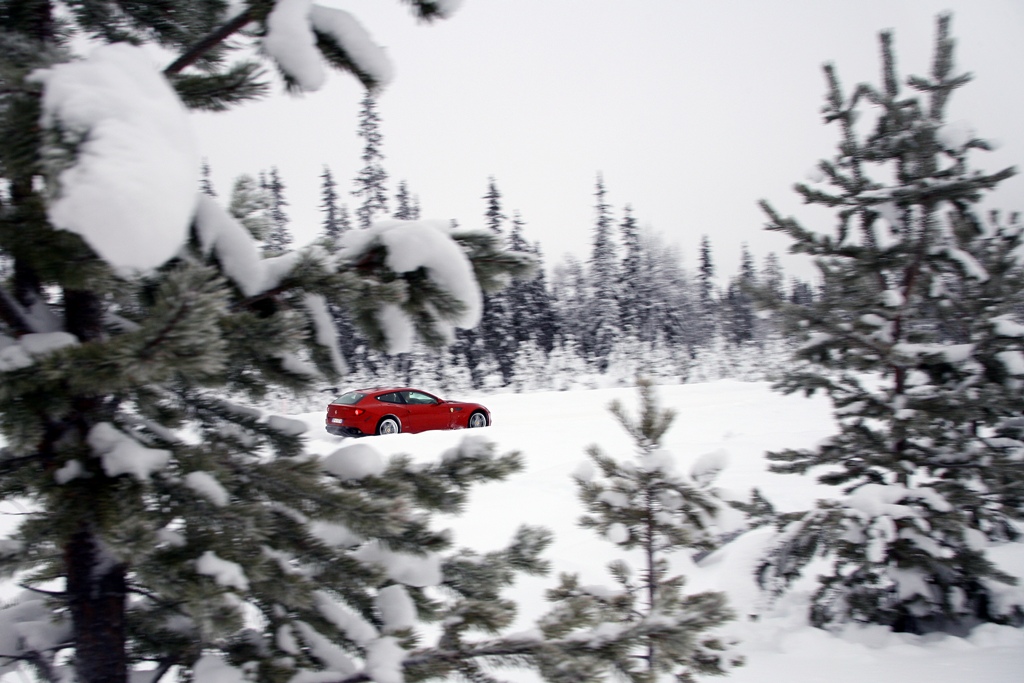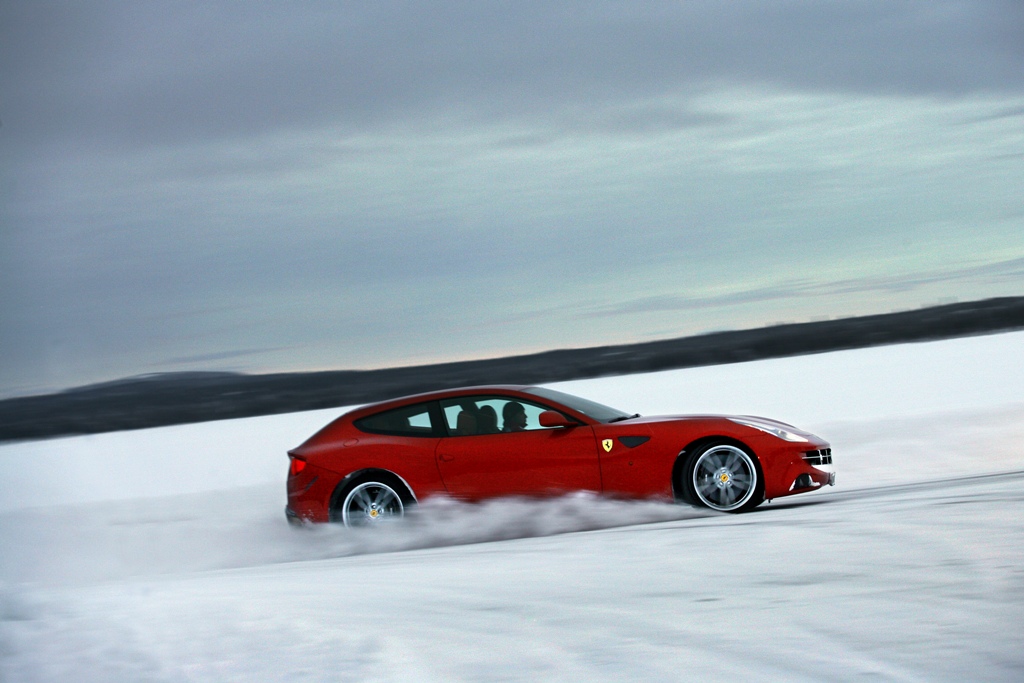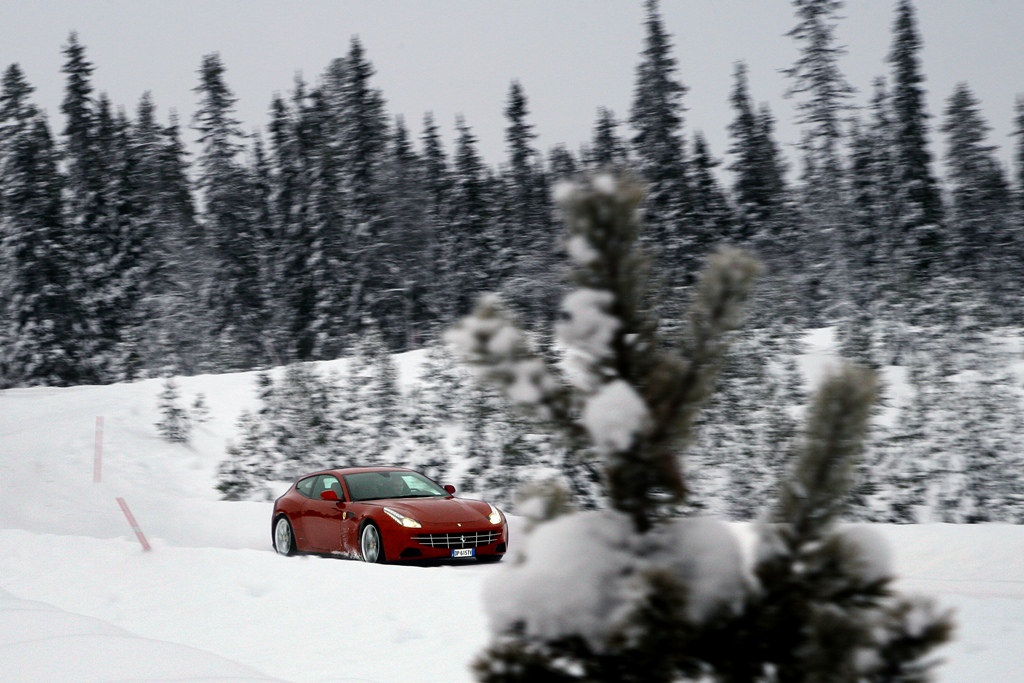Teamspeed First Drive: 2012 Ferrari FF
#1

Teamspeed First Drive: 2012 Ferrari FF
We take the new Family Ferrari for a stroll in its natural habitat
Text by Jesse Taylor - Teamspeed.com contributing editor
What is it? The practical Ferrari; the five-meter hatchback FF is the
brand’s first-ever all-wheel drive model
Why do I care? It’s got more power than an Enzo, and until the 599 GTB
replacement arrives, it’s the most powerful series production Ferrari
ever
How fast is it? 6262cc V12, 650hp@8000rpm (486kW), 504lb ft@6000rpm
(683Nm), 0-62mph 3.7sec, 208mph vmax
How much is it? From $359,000
You get the feeling that with the FF, Ferrari is keen to reverse the lack of respect or adulation its four-seater models have been afforded in the past compared with its leaner, meaner two-seat sports cars. Take a look at what’s been thrown at the FF: a thumping 6.3-litre V12 producing 486kW that will power it to a top speed of 335km/h, hitting 100km/h in 3.7 seconds along the way; a compact AWD transmission incorporating a seven-speed dual-clutch transaxle with an almost independent module for the front wheels. Multi-link rear suspension replaces Ferrari’s usual double wishbones for ride comfort as well as handling precision. And there are massive carbon-ceramic disc brakes to haul the FF’s all-alloy body down from 100km/h in 35 meters.
The list of technical specifications goes on, but one other thing is clear. Faced with a growing band of rivals such as the user-friendly four-doors introduced by Porsche and Aston Martin – a body style Ferrari has vowed to never produce – the FF also has enough space under that unusual shooting brake bum to swallow a decent amount of luggage and two rear seats big enough to accommodate adults in, if not sprawling elegance, certainly more than superficial comfort.
The futuristic styling melds Klingon spaceship with a touch of Volvo practicality. Styling has split my office down the middle; long-time Ferrari fans have expressed dismay at the "toothy" grille but overall I really like it. The jeweled headlights and flashy grille do make color choice critical and I'd suggest the various reds on offer aren't the way to go. Instead, silver, grey, midnight blue and black work best in my humble opinion. An all-black example, with black wheels and blacked out grille was leaving the factory the last time I was there. Before you ask, Ferrari insisted I not take photos of this stunning FF as the owner is a “very well-loved and private friend of the brand”. The stern warning came with a suggestion that the owner might be of Eastern European extraction and not one to take unwanted publicity well. I dared not push my luck.

To achieve the greatness missing from forebears such as the 612 Scaglietti, the FF also needs uncompromised performance, handling balance and the kind of exuberant razzmatazz that makes Ferraris what they are. After driving the FF both on its home soil in the snow-covered Dolomites in north-eastern Italy, and in my native Australia, there’s no doubting it’s got all that and much, much more.
First up, there’s the noise. Not only does the exhaust bark angrily from the moment the starter button is pushed, then bellow and howl as the engine scales its 8500rpm rev range, but there are a couple of tubes that transmit from the air box to the cabin to make sure occupants miss none of the snuffling induction roar.

The 6.3-litre V12 itself is a masterpiece. Although a development of the engine from the 612, there’s very little of the older engine left. With a 94.0mm bore and 75.2mm stroke, the engine is decidedly over-square which adds to its ability to rev to 8500rpm. Producing 486kW at 8000rpm, it’s actually a single kilowatt more powerful than the Enzo. Yes, it is powerful enough to imbue stunning performance in the five-meter, 1880kg FF, but sheer acceleration is only half the story. Peak torque of 683Nm arrives at 6000rpm, suggesting that, despite its brawny capacity, the 6.3-litre V12 is designed for peaky top-end power. Don’t believe it: 502Nm of that is available from as low as 1000rpm and the result is an uncanny elasticity of delivery in almost any gear, from anywhere in the rev range. The result is a crescendo of performance, and with seven ratios accessed via the huge right-hand shift-paddle and blindingly quick double-clutch gearshift, it just never seems to stop.

Ferrari engineers started work on what was to be the FF’s 4RM (Ferrari’s name for its 4WD system) back in 2004. The engineering approach to driving all four wheels is unique, thanks to a desire to mount the V12 engine behind the front axle line and the need to incorporate a rear-mounted transaxle to maintain a rearward weight bias for the car. So instead of an Audi-like solution, with a conventional gearbox position, center diff and prop-shaft taking torque forward, they went a different route. The key is the FF’s Power Transfer Unit (PTU) which is crankshaft driven off the front of the engine, and powers the front wheels when rear traction is lost. For anyone familiar with farming equipment, it’s similar in principle to the Power Take Off (PTO) found on many tractors. It acts in tandem with torque delivery to the rear wheels without being connected to them, managing the differential between engine and (front) wheel speeds, and also uses a pair of independent multi-plate clutches to direct torque to either front wheel. The result is a lightweight 4WD system, with the retention of a mid-front engine placement and a 47/53 front/rear weight balance.
Torque is channeled to tarmac via a complex array of electronic and mechanical traction aids. The rear mounted transaxle has Ferrari’s E-Diff to apportion torque left to right or, depending on the slipperiness of the surface, the 4RM comes into play, distributing torque to either or both front wheels. Stability and traction control are also activated, depending on what setting has been chosen by the driver on the GT Manettino on the steering wheel. The options are Comfort for normal driving, Sport for a bit more latitude, ESC Off, or two special programs for wet or icy roads.

It all works brilliantly. And no wonder, the system was developed with input from Finnish rallying God Markku Alen. Any doubts that this, Ferrari’s first all-wheel-drive model, might suffer from nose heaviness or understeer are quickly dispelled, which is not too surprising given it operates as a rear-driver the majority of the time.
On the snow fields atop the Dolomites you could push the FF into understeer if you were too early or aggressive with the throttle, or attempted to carry too much pace into the corner. But if you don’t drive like a muppet, the FF simple carves a neat path. On the sinuous and, in places, still icy roads nearby, the FF showed it takes a very tight corner and a slippery surface to kick the rear-end loose under power. Almost before driver reactions could intervene, the front end pulled everything together without interrupting forward momentum. It’s so good, you hardly notice.

The steering is deliciously well-weighted despite being surprisingly light and the automated gearshifts are crisp and direct. Perhaps the FF’s best trick is that, despite being monumentally quick, it is also effortless. The gearbox works like a good, conventional automatic when switched to set-and-forget mode, and the ride comfort is brilliant. Bump absorption and body control aren't just acceptable for a performance coupe on 35-series low-profile tyres, they're better than that of many German sedans. Credit for this must go to the multi-link rear end and the third generation of Ferrari’s magnetic dampers, but you can’t help thinking there’s a little black magic involved too.
Lift the tail gate (annoyingly, the boot release is in the cabin) and there’s a reasonable amount of load space. The rear seat is split 40/20/40 and although only the outer sections fold flat, this is clearly more utility than Ferrari has ever offered in a GT.
Rear legroom requires a compromise with front seat position, but headroom under that extended roofline is good enough for a 1.8-metre passenger. There are no airbags for rear head protection; Ferrari says thanks to the strength of the FF’s spaceframe, they’re not needed.

From the driver’s seat it’s a mixture of business and luxury. Steering column stalks have been eliminated to accommodate the shift paddles, meaning indicators are buttons on the steering wheel and the headlight dial is totally hidden somewhere behind. The best thing about the wheel is that it seems to have been nowhere near a styling studio for smooth looks: the Manettino, engine starter, damper selection and indicators are there to be seen and used.
It’s details like these, along with the obvious depths of engineering that have gone into all facets of the FF – engine, drivetrain, suspension, packaging and yes, even styling – that show how serious Ferrari is about its new four-seater. To drive, the FF is a stunning combination of speed, balance and comfort. It is an achievement that’s every bit as impressive as the iconic two seaters such as the 599 GTB and 458 Italia, and possibly more so given its greater spread of abilities.

#5
Isn't the 599GTO the most powerful series production Ferrari ever or doesn't it count since it's a "limited" edition (We all know Ferrari built way more than 599 cars) ?










